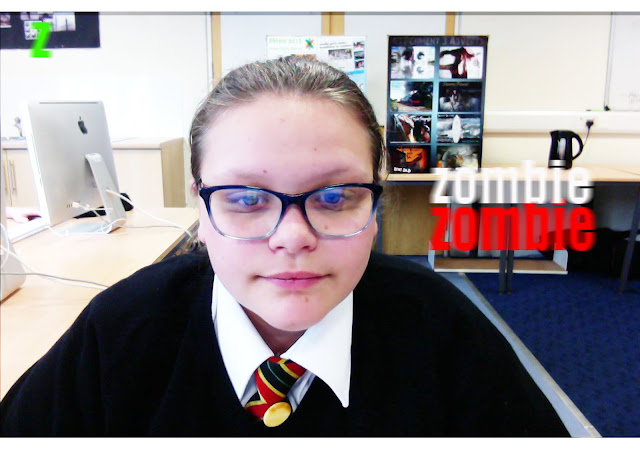Terminology
Monday 19th November 2018
Camera work:
establishing shots: The first shot of a new scene, designed to show the audience where it is taking place.
Low angle: A shot anywhere below the eye-line, looking up.
High angle: Technique where they are looking down on the subject. it also makes the subject look less powerful.
Canted angle: slant towards one side sometimes used for a dramatic affect.
Aerial shots: a higher up angle shot to make scenes more dramatic.
Elaborate camera movement such as tracks,steadicam or crane shots:
Hand held camera: camera is held in the camera operators hand rather than being mounted on a tripod.
Point of view shots: shows what the character or subject is looking at.
Shallow focus: one part of the image is in focus and the rest of it out of focus.
focus pulls: change focus during the shot means adjusting the focus from one subject to another.
Editing:
Shot: is a series of frames that run for an uninterrupted period of time.
reverse shot: Where on character is looking at a different character off scene and the other character is shown looking back at the first character.
Juxtaposition: A montage of combining two or more shots to evoke an idea or state of mind.
Non-continuity editing: to create an illusion of smooth continues action and helps to keep the audiences attention to the story.
Crosscutting: illustrates a narrative action that happens in several places at the same time.
fast-paced editing: used to convey a lot of information very quickly.
Less common transitions: dissolve, wipe, fade: transitions are used to change one thing to another.
post-production effects: film editor work with raw footage and edits them into a sequence which creates a finished motion picture.
Sound Track:
Music: A music director would select the music used in films.
Diegetic sound: sound whose source is visible on the screen or whose source is implied to be present by the action of the film.
non-diegetic sound:sound whose source is neither visible on the screen or has been implied to be present in the action.
sound effects: a sound other than speech or music made artificially for use in films and plays.
sound bridge: a sound bridge is a the of sound editing that occurs when sound carries over a visual transition in a film.
voiceover: is a production technique where a voice that is not part of the narrative is used.
mise en scene:
Lighting: illumination by which the objects within the frame can be seen.
Location/set: Those elements within the frame that function to depict space, place, and time period.
Costume and makeup: the clothing and attire of characters, Pigments and materials applied to figures to construct their characters.
props: props are being used are part of the frame arrangement.
Casting and performance style:
blocking (the composition of elements within the shot):Blocking was originally a theatre term that refers to the positioning and movement of the actors in the stage.
Camera work:
establishing shots: The first shot of a new scene, designed to show the audience where it is taking place.
Low angle: A shot anywhere below the eye-line, looking up.
High angle: Technique where they are looking down on the subject. it also makes the subject look less powerful.
Canted angle: slant towards one side sometimes used for a dramatic affect.
Aerial shots: a higher up angle shot to make scenes more dramatic.
Elaborate camera movement such as tracks,steadicam or crane shots:
Hand held camera: camera is held in the camera operators hand rather than being mounted on a tripod.
Point of view shots: shows what the character or subject is looking at.
Shallow focus: one part of the image is in focus and the rest of it out of focus.
focus pulls: change focus during the shot means adjusting the focus from one subject to another.
Editing:
Shot: is a series of frames that run for an uninterrupted period of time.
reverse shot: Where on character is looking at a different character off scene and the other character is shown looking back at the first character.
Juxtaposition: A montage of combining two or more shots to evoke an idea or state of mind.
Non-continuity editing: to create an illusion of smooth continues action and helps to keep the audiences attention to the story.
Crosscutting: illustrates a narrative action that happens in several places at the same time.
fast-paced editing: used to convey a lot of information very quickly.
Less common transitions: dissolve, wipe, fade: transitions are used to change one thing to another.
post-production effects: film editor work with raw footage and edits them into a sequence which creates a finished motion picture.
Sound Track:
Music: A music director would select the music used in films.
Diegetic sound: sound whose source is visible on the screen or whose source is implied to be present by the action of the film.
non-diegetic sound:sound whose source is neither visible on the screen or has been implied to be present in the action.
sound effects: a sound other than speech or music made artificially for use in films and plays.
sound bridge: a sound bridge is a the of sound editing that occurs when sound carries over a visual transition in a film.
voiceover: is a production technique where a voice that is not part of the narrative is used.
mise en scene:
Lighting: illumination by which the objects within the frame can be seen.
Location/set: Those elements within the frame that function to depict space, place, and time period.
Costume and makeup: the clothing and attire of characters, Pigments and materials applied to figures to construct their characters.
props: props are being used are part of the frame arrangement.
Casting and performance style:
blocking (the composition of elements within the shot):Blocking was originally a theatre term that refers to the positioning and movement of the actors in the stage.


Comments
Post a Comment